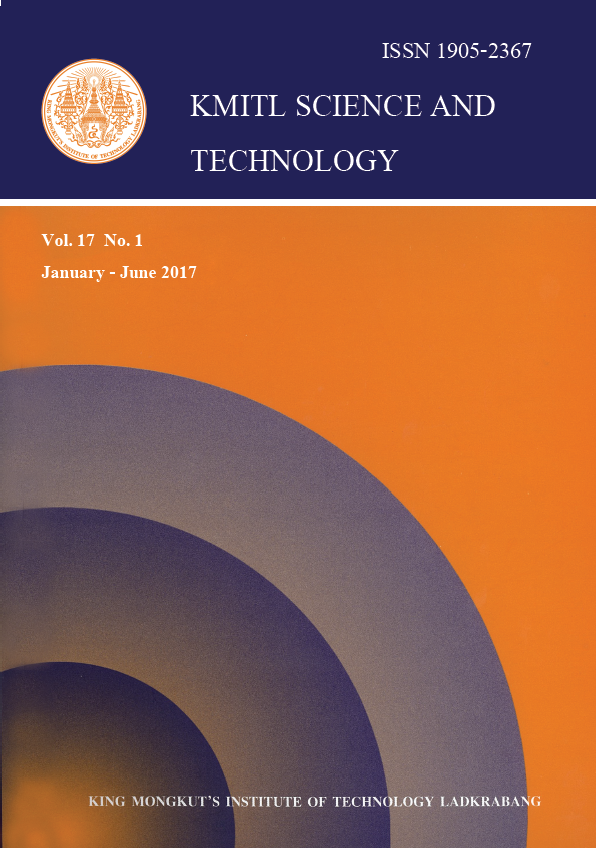Antibacterial Activity of Lactobacillus buchneri Bacteriocin against Vibrio parahaemolyticus
Main Article Content
Abstract
Eleven yoghurt samples were collected from local markets in Baghdad to isolate Lactobacillus buchneri. Only 3 isolates of L. buchneri were found and the isolate No. 3 was the most producer of bacteriocin. Bacteriocin was adsorbed 100% onto silicic acid at pH 6.0-7.0. Below or above these pH values, adsorption was decreased, ranging between 35 and 90%. Therefore, pH 6.0 was used for the purification procedure. The purification procedure including silicic acid adsorption/desorption and cation-exchange chromatography (CEC) resulted in a 11.11 fold increase in the final specific activity of pure bacteriocin (1176.47 Au/mg) compared to the culture supernatant which was 32.64 Au/mg. The molecular weight was determined to be about 3.4 kDa. The bacteriocin lost its activity completely after treatment with proteolytic enzymes and it was resistant to non-proteolytic enzymes. The results indicated that bacteriocin at both concentrations (500 and 1000 μg/ml) possesses significant antimicrobial activity against Vibrio parahaemolyticus in contrast with control (P<0.01) and the antimicrobial activity of crude and purified bacteriocin at the concentration of 1,000 μg/ml were higher than the other concentration (500 μg/ml). The antimicrobial activity of purified bacteriocin was significantly higher than that of crude bacteriocin (P<0.01).
Keywords: antimicrobial activity, Buchnericin LB, Lactobacillus buchneri
*Corresponding author: Tel.: ++9647901266314
E-mail: likaahamied@yahoo.com
Article Details
Copyright Transfer Statement
The copyright of this article is transferred to Current Applied Science and Technology journal with effect if and when the article is accepted for publication. The copyright transfer covers the exclusive right to reproduce and distribute the article, including reprints, translations, photographic reproductions, electronic form (offline, online) or any other reproductions of similar nature.
The author warrants that this contribution is original and that he/she has full power to make this grant. The author signs for and accepts responsibility for releasing this material on behalf of any and all co-authors.
Here is the link for download: Copyright transfer form.pdf
References
[2] Nettles, C.G. and Barefoot, S.F., 1993. Biochemical and genetic characteristics of bacteriocins of food-associated lactic acid bacteria. Journal of Food Protection, 56(4), 338-356
[3] Kleinschmit, D.H., Schmidt, R.J. and Kung, L., 2005. The effects of various antifungal additives on the fermentation and aerobic stability of corn silage. Journal of Dairy Science, 88, 2130-2139.
[4] Kung, L. and Ranjit, N.K., 2001. The effect of Lactobacillus buchneri and other additives on the fermentation and aerobic stability of barley silage. Journal of Dairy Science, 84, 1149-1155.
[5] Taylor, C.C., Ranjit, N.J., Mills, J.A., Neylon, J.M. and Kung, L., 2002. The effect of treating whole-plant barley with Lactobacillus buchneri 40788 on silage fermentation, aerobic stability, and nutritive value for dairy cows. Journal of Dairy Science, 85, 1793-1800.
[6] Sumner, S.S., Speckhard, M.W., Somers, E.B. and Taylor S.L., 1985. Isolation of histamine-producing Lactobacillus buchneri from Swiss cheese implicated in a food poisoning outbreak. Applied and Environmental Microbiology, 50, 1094-1096.
[7] Yildirim, Z. and Yildirim, M., 2001. Characterization of buchnericin LB produced by Lactobacillus buchneri LB. Turkish Journal of Biology, 25, 73-82.
[8] Holt, J.G., Krieg, N.R., Sneath, P.H.A., Staley, J.T. and Williams, S.T., 1994. Bergey’s Manual of Determinative Bacteriology. 9th ed. Baltimore, Maryland. USA: Williams and Wilkins Company. https://dx.doi.org/10.1111/j.1365-2672.2006.02966.x
[9] Ogunbanwo, S.T., Sanni, A.I. and Onilude, A.A., 2003. Characterization of bacteriocin produced by Lactobacillus plantarum F1 and Lactobacillus brevis OG1. African Journal of Biotechnology, 2(8), 219-227.
[10] Yildirim, Z., Winters, D.K. and Johnson, M.G., 1998. Gene locus and mode of action of lactococcin R produced by Lactococcus lactic sμgsp. cremoris R (a radish isolate). Annual IFT Meeting, Atlanta, Georgia.
[11] Yildirim, Z., Winters, D.K. and Johnson, M.G., 1999. Purification, amino acid and mode of action of bifidocin B produced by Bifidobacterium bifidum NCFB 1454. Journal of Applied Microbiology, 86, 45-54.
[12] Yeasmin, T., Tang, Md. A.K., Razzaque, A. and Absar, N., 2001. Purification and characterization of three galactose specific lectins from Mulberry seeds (Morus sp.). European Journal of Biochemistry, 268, 6005-6010.
[13] Mahdi, L.H. and Shafiq, SH.A., 2014. Effects of crude and purified bacteriocin of Pediococcus pentosaceus on the growth and zearalenone production by Fusarium graminearum. International Journal of Current Engineering and Technology, 4(1), 1-5.
[14] Batdorj, B., Dalgalarrondo, B.M., Choieset, Y., Pedroche, J., Metro, F. and Prevost, H., 2006. Purification and characterization of two bacteriocins produced by lactic acid bacteria isolated from Mongolian airag. Journal of Applied Microbiology, 101, 837-848.
[15] Yildirim, M., 2001. Purification of buchnericin LB produced by Lactobacillus buchneri LB. Turkish Journal of Biology, 25, 59-65.
[16] Janes, M.E., Nannapaneni, R. and Johnson, M.G., 1997. Rice hull ash an adsorbent and delivery agent for. Bacteriocins. AFT Annual Meeting, Orlando, Florida June 14-18, Paper 14D-11, p.31.
[17] Bhunia, A., Johnson, M.C., Ray, B. and Kalchanand, N., 1991. Mode of action pediocin AcH from Pediococcus acidilactici H on sensitive bacterial strains. Journal of Applied Bacteriology, 70, 25-33.


